How to value your business in 2022
Is it only worth what the buyer wants to pay?
The last year has been challenging for all of us, let alone business owners who’ve had to claim
emergency support and battled hard to stay afloat.
Having survived those choppy waters, maybe it’s time to get your business valued as thoughts drift towards an exit strategy or securing external investment to facilitate growth.
It might be difficult to say what that value is from within your business.
After all, you’ve put hours of hard work into building your business from the ground up.
But what does that translate to in monetary terms?
A good place to start is to know exactly what it is you’re selling.
That could be the name of your business and its reputation, or a lease on a premises you or your company currently own.
Then there’s the type of business you are, the sector you operate in, any assets it holds, and the people who work there.
Those factors all contribute to your business’s overall value and its appeal to buyers.
Like most things, a business is only worth what a buyer is willing to pay for it.
However, having a clear picture is a great starting point when it comes to reaching an accurate valuation of your business, and to attract potential buyers.
Why value your business?
Valuing a business is usually done because you want to sell up and do something else, or to raise investment within your business, but other reasons also abound.
When it comes to selling your business, valuations can also help you to determine the right time to sell, to negotiate the best possible deal, or to move negotiations along.
Valuations can also be particularly useful to know when you’re planning your retirement, and thinking about your financial future and that of your family.
Research by Which? suggests one-person households spend an average of £19,000 a year and households with two people spend an average of £26,000 a year.
The latter figure covers all the basic areas of expenditure and some luxuries, such as European holidays (when we’re allowed to go overseas), hobbies and dining out.
Alternatively, a business valuation can help you grow your business.
You could even choose to carry out annual valuations to give you an accurate picture of the stage your business is at.
Things to consider
Several factors might come into play when determining your business’s value, and some of these are included in the valuation methods we’ll describe in more detail later.
Assets and liabilities: What assets do your business own? How full is your order book? Be transparent about any debt or other liabilities the business has.
Business age: Startups might have a lot of potential on their side, but they often make losses. More established businesses tend to be profit-making and face fewer risks in the eyes of buyers or investors.
Circumstances: Has the pandemic put you under pressure to sell quickly in order to repay debts or retire due to ill-health? Fire sales usually result in lower offers.
Finance: Do you have historical and current cashflow and profit projections? How well do you control costs? These factors play a big role in valuing your business.
Market demand: Market conditions tend to affect all businesses. Being able to show demand for your products or services will be very attractive to buyers or investors.
Reputation and customers: Does your business come with a good client base and a reputation for quality products or services? Having consumers’ trust can really boost the value of your business.
Staff: Is staff turnover high or do you reward employees via pay rises and benefits-in-kind? Good levels of staff retention retains experience and ties in with your business’s reputation.
Business valuation methods
Once you’ve gathered together all of the relevant information about your business, it’s time to get into the technical details of calculating its value.
There are five main methods for this, which we’ve set out below.
The most appropriate valuation method for you will largely depend on the type of business you operate: the sector it’s in, the size of the business, how long it’s been running, and so on.
Most people will use a combination of two or more methods to reach a final figure for their business’s value.
Valuing assets
Established businesses, such as those in manufacturing or property, are usually valued by the tangible assets they own, minus any liabilities.
The overall value is based on that figure.
This method makes sense if you have a stable business with assets that have measurable value, and usually a physical form, such as equipment, machinery, furniture, land, and so on.
Valuations on intangible assets
Intangible assets, such as the skills and experience of your workforce, or intellectual property like patents, copyrights and trademarks, tend to be much more difficult to value.
That extends to negotiating skills, desirable relationships with customers or suppliers, and a strong management team and loyal staff who won’t jump ship at the first sign of a pay rise.
While you can’t put a figure on these types of assets, they play a key role in driving the business forward.
Having them will certainly be more attractive to a buyer.
Discounted cashflow
Bigger companies with fairly stable cashflow can be valued using the discounted cashflow method, although this has become more difficult to predict since the pandemic.
Essentially, it works by using forecasts for several years to work out what a business’s future cashflow is worth today.
The business’s value is worked out at a discounted rate, to take into account potential risks and the decreasing value of money over time.
This method relies on several assumptions about long-term conditions.
But as COVID-19 shows, nobody knows what’s around the corner and that makes this method more complex than it already was.
Entry-cost valuation
A much more simple method than discounted cashflow arrives in the form of entry-cost valuation.
This is a way of working out a business’s value by estimating how much it would cost to launch a similar startup.
It should factor in the cost of everything from raising finance, buying assets and developing products, to employing and training staff, or building a customer base.
This method can also factor in any savings you could make, such as adopting more advanced technology, using cheaper materials, or basing the business in a less expensive area.
Price-to-earnings ratio
If your business has an established track record of making profits, the chances are it will be valued by its price-to-earnings ratio, or multiples of profit.
Calculations for these ratios are usually driven by profits.
For example, if a firm has high forecast profit growth or a good record or repeat earnings, it could result in a higher ratio.
Let’s say you own a tech business which has £500,000 post-tax profits and you apply a ratio of four to it.
This would mean your firm is valued at £2 million
There’s no such thing as a standard ratio that can be used to value all businesses, and the ratios can wildly differ.
Get in touch to value your business.





